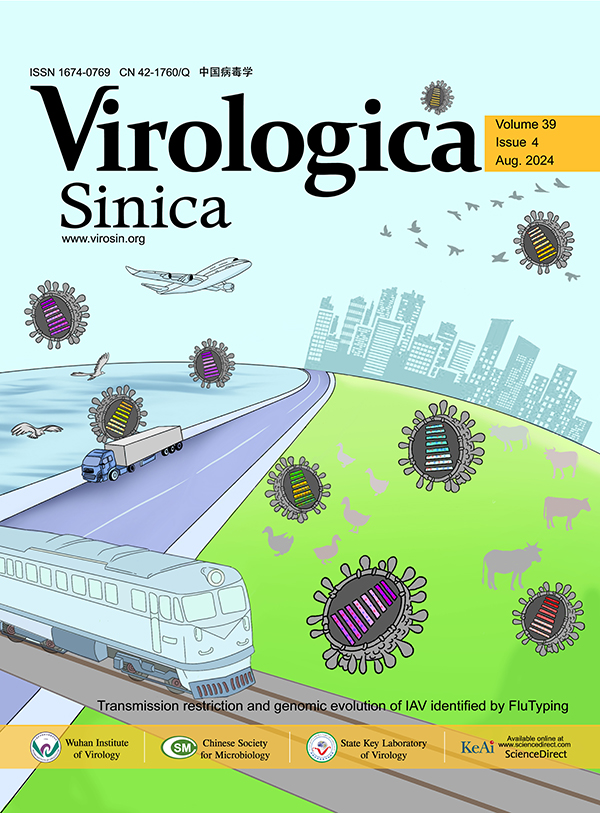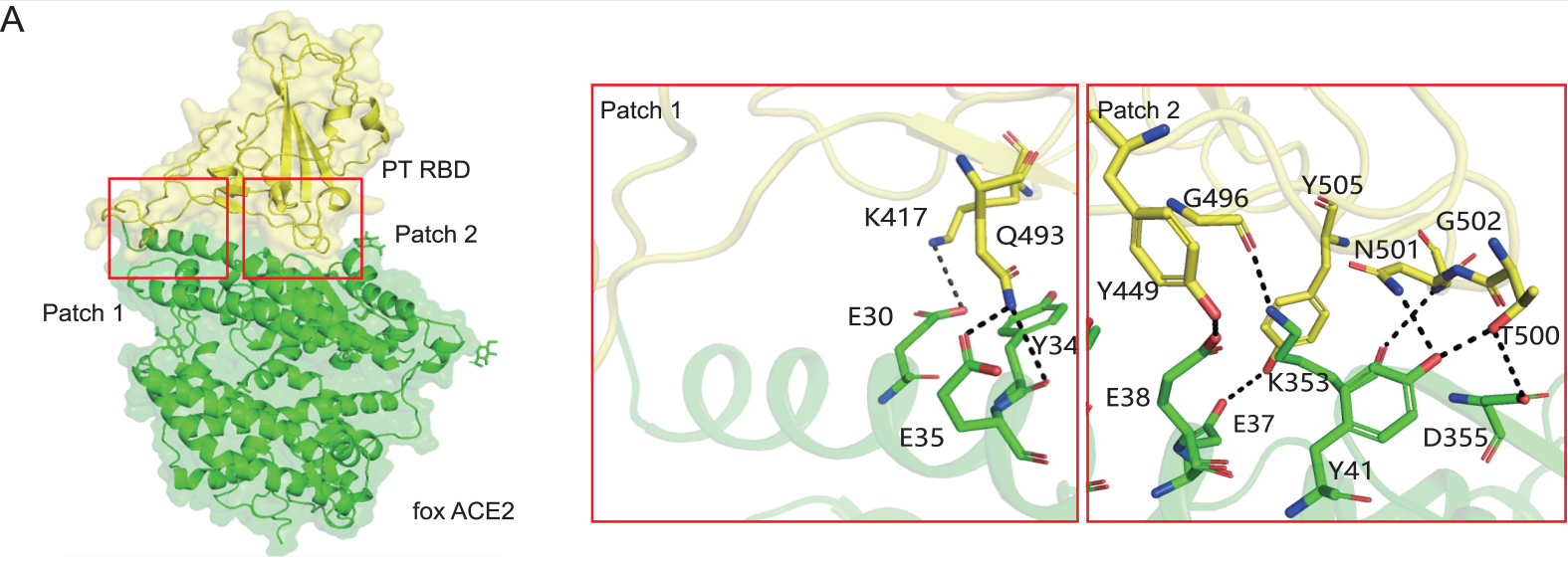-
Adams, P. D., Afonine, P. V., Bunkoczi, G., Chen, V. B., Davis, I. W., Echols, N., Headd, J. J., Hung, L. W., Kapral, G. J., Grosse-Kunstleve, R. W., McCoy, A. J., Moriarty, N. W., Oeffner, R., Read, R. J., Richardson, D. C., Richardson, J. S., Terwilliger, T. C., Zwart, P. H., 2010. PHENIX: a comprehensive Python-based system for macromolecular structure solution. Acta Crystallogr D Biol Crystallogr, 66: 213-221.
-
Bepler, T., Morin, A., Rapp, M., Brasch, J., Shapiro, L., Noble, A. J., Berger, B., 2019. Positive-unlabeled convolutional neural networks for particle picking in cryo-electron micrographs. Nat Methods, 16: 1153-1160.
-
Chen, V. B., Arendall, W. B., 3rd, Headd, J. J., Keedy, D. A., Immormino, R. M., Kapral, G. J., Murray, L. W., Richardson, J. S., Richardson, D. C., 2010. MolProbity: all-atom structure validation for macromolecular crystallography. Acta Crystallogr D Biol Crystallogr, 66: 12-21.
-
Cui, S., Liu, Y., Zhao, J., Peng, X., Lu, G., Shi, W., Pan, Y., Zhang, D., Yang, P., Wang, Q., 2022. An updated review on SARS-CoV-2 infection in animals. Viruses, 14: 1527.
-
Emsley, P., Lohkamp, B., Scott, W. G., Cowtan, K., 2010. Features and development of Coot. Acta Crystallogr D Biol Crystallogr, 66: 486-501.
-
Gao, G. F., Wang, L., 2021. COVID-19 expands its territories from humans to animals. China CDC Weekly, 3: 855-858.
-
Gu, H., Chen, Q., Yang, G., He, L., Fan, H., Deng, Y. Q., Wang, Y., Teng, Y., Zhao, Z., Cui, Y., Li, Y., Li, X. F., Li, J., Zhang, N. N., Yang, X., Chen, S., Guo, Y., Zhao, G., Wang, X., Luo, D. Y., Wang, H., Yang, X., Li, Y., Han, G., He, Y., Zhou, X., Geng, S., Sheng, X., Jiang, S., Sun, S., Qin, C.F., Zhou, Y., 2020. Adaptation of SARS-CoV-2 in BALB/c mice for testing vaccine efficacy. Science, 369: 1603-1607.
-
Hammer, A. S., Quaade, M. L., Rasmussen, T. B., Fonager, J., Rasmussen, M., Mundbjerg, K., Lohse, L., Strandbygaard, B., Joergensen, C. S., Alfaro-Nunez, A., Rosenstierne, M. W., Boklund, A., Halasa, T., Fomsgaard, A., Belsham, G. J., Boetner, A., 2021. SARS-CoV-2 Transmission between mink (Neovison vison) and humans, Denmark. Emerg Infect Dis, 27: 547-551.
-
Han, P., Su, C., Zhang, Y., Bai, C., Zheng, A., Qiao, C., Wang, Q., Niu, S., Chen, Q., Zhang, Y., Li, W., Liao, H., Li, J., Zhang, Z., Cho, H., Yang, M., Rong, X., Hu, Y., Huang, N., Yan, J., Wang, Q., Zhao, X., Gao, G.F., Qi, J., 2021. Molecular insights into receptor binding of recent emerging SARS-CoV-2 variants. Nat Commun, 12: 6103.
-
Han, P., Meng, Y., Zhang, D., Xu, Z., Li, Z., Pan, X., Zhao, Z., Li, L., Tang, L., Qi, J., Liu, K., Gao, G. F., 2023. Structural basis of white-tailed deer, Odocoileus virginianus, ACE2 recognizing all the SARS-CoV-2 variants of concern with high affinity. J Virol, 97: e0050523.
-
Hu, Y., Liu, K., Han, P., Xu, Z., Zheng, A., Pan, X., Jia, Y., Su, C., Tang, L., Wu, L., Bai, B., Zhao, X., Tian, D., Chen, Z., Qi, J., Wang, Q., Gao, G. F., 2023. Host range and structural analysis of bat-origin RshSTT182/200 coronavirus binding to human ACE2 and its animal orthologs. EMBO J, 42: e111737.
-
Kane, Y., Wong, G., Gao, G. F., 2023. Animal models, zoonotic reservoirs, and cross-species transmission of emerging human-infecting coronaviruses. Annu Rev Anim Biosci, 11: 1-31.
-
Li, L., Han, P., Huang, B., Xie, Y., Li, W., Zhang, D., Han, P., Xu, Z., Bai, B., Zhou, J., Kang, X., Li, X., Zheng, A., Zhang, R., Qiao, S., Zhao, X., Qi, J., Wang, Q., Liu, K., Gao, G. F., 2022. Broader-species receptor binding and structural bases of Omicron SARS-CoV-2 to both mouse and palm-civet ACE2s. Cell Discov, 8: 65.
-
Li, W., Xu, Z., Niu, T., Xie, Y., Zhao, Z., Li, D., He, Q., Sun, W., Shi, K., Guo, W., Chang, Z., Liu, K., Fan, Z., Qi, J., Gao, G. F., 2024. Key mechanistic features of the trade-off between antibody escape and host cell binding in the SARS-CoV-2 Omicron variant spike proteins. EMBO J, 43:1484-1498.
-
Liu, K., Pan, X., Li, L., Yu, F., Zheng, A., Du, P., Han, P., Meng, Y., Zhang, Y., Wu, L., Chen, Q., Song, C., Jia, Y., Niu, S., Lu, D., Qiao, C., Chen, Z., Ma, D., Ma, X., Tan, S., Zhao, X., Qi, J., Gao, G.F., Wang, Q., 2021. Binding and molecular basis of the bat coronavirus RaTG13 virus to ACE2 in humans and other species. Cell, 184: 3438-3451.e10.
-
Liu, Y., Hu, G., Wang, Y., Ren, W., Zhao, X., Ji, F., Zhu, Y., Feng, F., Gong, M., Ju, X., Zhu, Y., Cai, X., Lan, J., Guo, J., Xie, M., Dong, L., Zhu, Z., Na, J., Wu, J., Lan, X., Xie, Y., Wang, X., Yuan, Z., Zhang, R., Ding, Q., 2021. Functional and genetic analysis of viral receptor ACE2 orthologs reveals a broad potential host range of SARS-CoV-2. Proc Natl Acad Sci U S A, 118: e2025373118.
-
Niu, S., Wang, J., Bai, B., Wu, L., Zheng, A., Chen, Q., Du, P., Han, P., Zhang, Y., Jia, Y., Qiao, C., Qi, J., Tian, W. X., Wang, H. W., Wang, Q., Gao, G. F., 2022. Molecular basis of cross-species ACE2 interactions with SARS-CoV-2-like viruses of pangolin origin. EMBO J, 41: e109962.
-
Peng, R., Wu, L. A., Wang, Q., Qi, J., Gao, G. F., 2021. Cell entry by SARS-CoV-2. Trends Biochem Sci, 46: 848-860.
-
Pettersen, E. F., Goddard, T. D., Huang, C. C., Couch, G. S., Greenblatt, D. M., Meng, E. C., Ferrin, T. E., 2004. UCSF Chimera--a visualization system for exploratory research and analysis. J Comput Chem, 25: 1605-1612.
-
Pickering, B., Lung, O., Maguire, F., Kruczkiewicz, P., Kotwa, J. D., Buchanan, T., Gagnier, M., Guthrie, J. L., Jardine, C. M., Marchand-Austin, A., Masse, A., McClinchey, H., Nirmalarajah, K., Aftanas, P., Blais-Savoie, J., Chee, H. Y., Chien, E., Yim, W., Banete, A., Griffin, B. D., Yip, L., Goolia, M., Suderman, M., Pinette, M., Smith, G., Sullivan, D., Rudar, J., Vernygora, O., Adey, E., Nebroski, M., Goyette, G., Finzi, A., Laroche, G., Ariana, A., Vahkal, B., Cote, M., McGeer, A.J., Nituch, L., Mubareka, S., Bowman, J., 2022. Divergent SARS-CoV-2 variant emerges in white-tailed deer with deer-to-human transmission. Nat Microbiol, 7: 2011-2024.
-
Porter, S. M., Hartwig, A. E., Bielefeldt-Ohmann, H., Bosco-Lauth, A. M., Root, J. J., 2022. Susceptibility of wild canids to SARS-CoV-2. Emerg Infect Dis, 28: 1852-1855.
-
Punjani, A., Rubinstein, J. L., Fleet, D. J., Brubaker, M. A., 2017. cryoSPARC: algorithms for rapid unsupervised cryo-EM structure determination. Nat Methods, 14: 290-296.
-
Rao, X., Zhao, R., Tong, Z., Guo, S., Peng, W., Liu, K., Li, S., Wu, L., Tong, J., Chai, Y., Han, P., Wang, F., Jia, P., Li, Z., Zhao, X., Li, D., Zhang, R., Zhang, X., Zou, W., Li, W., Wang, Q., Gao, G.F., Wu, Y., Dai, L., Gao, F., 2023. Defining a de novo non-RBM antibody as RBD-8 and its synergistic rescue of immune-evaded antibodies to neutralize Omicron SARS-CoV-2. Proc Natl Acad Sci U S A, 120: e2314193120.
-
Tang, L., Zhang, D., Han, P., Kang, X., Zheng, A., Xu, Z., Zhao, X., Wang, V. Y., Qi, J., Wang, Q., Liu, K., Gao, G. F., 2022. Structural basis of SARS-CoV-2 and its variants binding to intermediate horseshoe bat ACE2. Int J Biol Sci, 18: 4658-4668.
-
Wang, M., Jing, H. Q., Xu, H. F., Jiang, X. G., Kan, B., Liu, Q. Y., Wan, K. L., Cui, B. Y., Zheng, H., Cui, Z. G., Yan, M. Y., Liang, W. L., Wang, H. X., Qi, X. B., Li, Z. J., Li, M. C., Chen, K., Zhang, E. M., Zhang, S. Y., Hai, R., Yu, D.Z., Xu, J. G., 2005. Surveillance on severe acute respiratory syndrome associated coronavirus in animals at a live animal market of Guangzhou in 2004. Zhonghua Liu Xing Bing Xue Za Zhi, 26: 84-87. (In Chinese).
-
Wang, Q., Zhang, Y., Wu, L., Niu, S., Song, C., Zhang, Z., Lu, G., Qiao, C., Hu, Y., Yuen, K. Y., Wang, Q., Zhou, H., Yan, J., Qi, J., 2020. Structural and functional basis of SARS-CoV-2 entry by using human ACE2. Cell, 181: 894-904.e9.
-
Wang, K., Pan, Y., Wang, D., Yuan, Y., Li, M., Chen, Y., Bi, L., Zhang, X. E., 2023. Altered hACE2 binding affinity and S1/S2 cleavage efficiency of SARS-CoV-2 spike protein mutants affect viral cell entry. Virol Sin, 38: 595-605.
-
World Organization for Animal Health (OIE) (WOAH), 2023. SARS-COV-2 in animals-Situation report 22. https://www.woah.org/en/document/sars-cov-2-in-animals-situation-report-22/ (Accessed 30 June 2023).
-
Wu, L., Chen, Q., Liu, K., Wang, J., Han, P., Zhang, Y., Hu, Y., Meng, Y., Pan, X., Qiao, C., Tian, S., Du, P., Song, H., Shi, W., Qi, J., Wang, H. W., Yan, J., Gao, G. F., Wang, Q., 2020. Broad host range of SARS-CoV-2 and the molecular basis for SARS-CoV-2 binding to cat ACE2. Cell Discov, 6: 68.
-
Xu, Z., Kang, X., Han, P., Du, P., Li, L., Zheng, A., Deng, C., Qi, J., Zhao, X., Wang, Q., Liu, K., Gao, G. F., 2022a. Binding and structural basis of equine ACE2 to RBDs from SARS-CoV, SARS-CoV-2 and related coronaviruses. Nat Commun, 13: 3547.
-
Xu, Z., Liu, K., Gao, G. F., 2022b. Omicron variant of SARS-CoV-2 imposes a new challenge for the global public health. Biosaf Health, 4: 147-149.
-
Yan, R., Zhang, Y., Li, Y., Xia, L., Guo, Y., Zhou, Q., 2020. Structural basis for the recognition of SARS-CoV-2 by full-length human ACE2. Science (New York, N.Y.), 367: 1444-1448.
-
Zhang, Z., Zhang, Y., Liu, K., Li, Y., Lu, Q., Wang, Q., Zhang, Y., Wang, L., Liao, H., Zheng, A., Ma, S., Fan, Z., Li, H., Huang, W., Bi, Y., Zhao, X., Wang, Q., Gao, G. F., Xiao, H., Tong, Z., Qi, J., Sun, Y., 2021. The molecular basis for SARS-CoV-2 binding to dog ACE2. Nat Commun, 12: 4195.
-
Zhao, X., Zheng, A., Li, D., Zhang, R., Sun, H., Wang, Q., Gao, G. F., Han, P., Dai, L., 2021. Neutralisation of ZF2001-elicited antisera to SARS-CoV-2 variants. Lancet Microbe, 2: e494.
-
Zhao, Z., Xie, Y., Bai, B., Luo, C., Zhou, J., Li, W., Meng, Y., Li, L., Li, D., Li, X., Li, X., Wang, X., Sun, J., Xu, Z., Sun, Y., Zhang, W., Fan, Z., Zhao, X., Wu, L., Ma, J., Li, O.Y., Shang, G., Chai, Y., Liu, K., Wang, P., Gao, G.F., Qi, J., 2023. Structural basis for receptor binding and broader interspecies receptor recognition of currently circulating Omicron sub-variants. Nat Commun, 14: 4405.
-
Zheng, S. Q., Palovcak, E., Armache, J. P., Verba, K. A., Cheng, Y., Agard, D. A., 2017. MotionCor2: anisotropic correction of beam-induced motion for improved cryo-electron microscopy. Nat Methods, 14: 331-332.
-
Zhu, N., Zhang, D., Wang, W., Li, X., Yang, B., Song, J., Zhao, X., Huang, B., Shi, W., Lu, R., Niu, P., Zhan, F., Ma, X., Wang, D., Xu, W., Wu, G., Gao, G. F., Tan, W., China Novel Coronavirus Investigating and Research Team, 2020. A novel coronavirus from patients with pneumonia in China, 2019. N Engl J Med, 382: 727-733.














 DownLoad:
DownLoad: